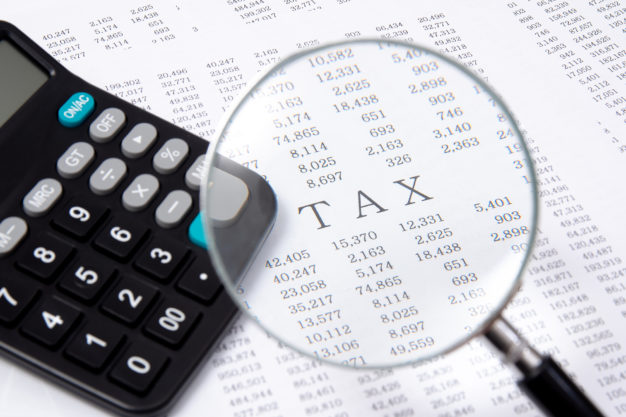IRS Urges Taxpayers to Choose Tax Preparers Carefully to Protect Data (IR-2025-21)
The IRS reminded taxpayers to choose the right tax professional to help them avoid tax-related identity theft and financial harm. […]
Read MoreTaxpayers may rely on proposed regulations that detail how to satisfy the prevailing wage and apprenticeship (PWA) requirements for bonus amounts that may apply to several energy and business credits. The regs also explain the correction and penalty provisions that allow taxpayers to claim the bonus credits even if they failed to satisfy the PWA tests. Comments are requested.
The Inflation Reduction Act of 2022 (P.L. 117-169) provided bonus credits as part of several new and existing components of the general business credit. The initial credit amount is increased for taxpayers that satisfy the PWA requirements during the construction, alteration and repair of a credit facility.
The bonus credits apply to the following 11 credits, plus one deduction:
The IRS previewed these proposed regs in Notice 2022-61 (TAXDAY, I.1, 11/30/2022).
In determining prevailing wages, the proposed regs largely incorporate the Davis-Bacon Act (DBA), as administered by the Wage and Hours Division of the Department of Labor (DOL), to the extent it is relevant and consistent with sound tax administration. However, the regs do not adopt the DBA’s federal contracting provisions, or its exemptions for Tribal governments and the Tennessee Valley Authority. The definition of “employed” is also broader for the PWA tests than it is for other purposes of the Code.
Under the proposed regs, the taxpayer that claims the increased credit would be solely responsible for:
“Taxpayer” includes an applicable entity that elects to treat the credit as a federal tax payment under Code Sec. 6417, and an eligible taxpayer that elects to transfer the credit to an unrelated person under Code Sec. 6418. Thus, the PWA requirements apply to the eligible taxpayer, not the transferee taxpayer.
The proposed regs define several relevant terms, including applicable wage determination, laborer, mechanic, construction, alteration, repair, locality or geographic area (including DOL site of work definitions), and prevailing wage rate. The proposed regs generally adopt DOL rules that allow lower prevailing wage rates for apprentices.
The proposed regs would require taxpayers to use the general wage determination in effect when the construction of the facility begins, but would not require taxpayers to update those rates during construction. However, consistent with DOL guidance under the DBA, a new general wage determination would be required when a contract is changed to include additional, substantial construction, alteration, or repair work, or to require work to be performed for an additional time period. Taxpayers would also need to update wage rates for alteration or repairs after the facility has been placed in service.
A general wage determination would be one issued and published by the DOL that includes a list of wage and bona fide fringe benefit rates determined to be prevailing for laborers and mechanics for the various classifications of work performed with respect to a specified type of construction in a geographic area. The proposed regulations would largely incorporate the definition of “wages” from 29 CFR 5.2 for the Prevailing Wage Requirements. This definition is not relevant in determining wages or compensation for other federal tax purposes.
The proposed regs would provide special procedures when a general wage determination does not provide applicable wage rates; as, for example, when no general wage determination has been issued for the geographic area, for the specified type of construction, or for a labor classification. According to the DOL, these situations should be rare. The taxpayer, contractor, or subcontractor would need to request a supplemental wage determination or prevailing wage rate for an additional classification from the DOL. However, taxpayers could not use these requests to split, subdivide, or otherwise avoid classifications in a general wage determination.
A request for a supplemental wage determination or a prevailing wage rate for an additional classification would need to include information consistent with the information that must be provided by a contracting agency when requesting a project wage determination or a conformance for purposes of the DBA. After review, the Wage and Hour Division will notify the taxpayer as to the labor classifications and wage rates to be used. The proposed regulations would also adopt the review and appeal procedures available to any interested party under the DBA with respect to wage determinations generally.
If construction of a credit facility spans adjacent geographic areas, the prevailing wage rate would the highest rate for each classification. For an offshore facility, taxpayers could rely on the general wage determinations in the geographic area closest to the area where the qualified facility will be located.
A taxpayer that fails to satisfy the PWA requirements may still qualify for the increased credit or deduction by satisfying correction and penalty provisions. The proposed regulations would provide that the obligation to make correction payments and pay the penalty would not become binding until the taxpayer files a return claiming the increased credit. The taxpayer generally would have to make correction payments to the underpaid workers before filing the return, and pay any penalty when the return is field.
In addition, the taxpayer would have to make the correction and penalty payments within 180 days after the IRS makes a final determination that a taxpayer failed to satisfy the Prevailing Wage Requirements, which would come in the form of a notice sent by the IRS. Although deficiency procedures would not apply to the penalty payment, deficiency procedures would apply to any IRS disallowance of the increased credit.
Taxpayers that cannot locate the underpaid workers are not excused from the correction requirements. The IRS expect that taxpayers will be able to establish correction payments by using existing state and tax withholding procedures. Taxpayers that underpay workers while waiting for a supplemental wage or additional classification determination would have 30 days after the determination to make correction payments. For purposes of credit transfers under Code Sec. 6418, the correction and penalty requirements would continue to apply to the eligible taxpayer, not the credit transferee.
For purposes of the increased correction and penalty amounts for intentional disregard of the PWA requirements, the proposed regs would provide that failures would be due to intentional disregard if they are knowing or willful, based on all relevant facts and circumstances. There would be a rebuttable presumption against intentional disregard if the taxpayer makes the correction and penalty payments before receiving a notice of an examination.
The proposed regs would provide limited penalty waivers when PWA failures are small in amount or occur in a limited number of pay periods. The penalty also would not apply with respect to a laborer or mechanic employed under a project labor agreement that meets certain requirements, if correction payments are made by the time the taxpayer claims the increased credit. The proposed regs would use the IRS’s general enforcement discretion to allow taxpayers to correct limited failures to pay prevailing wages if the taxpayers pay the mechanics and laborers back wages and interest in a timely manner before claiming the increased credit.
To satisfy the apprenticeship requirement, taxpayers must satisfy:
| (1) |
1. the Labor Hours Requirement, by ensuring that the applicable percentage of the total labor hours are performed by qualified apprentices; |
| (2) |
2. the Ratio Requirement, by ensuring that any applicable apprenticeship-to-journeyworker ratio is satisfied on a daily basis; and |
| (3) |
3. the Participation Requirement, which is intended to prevent taxpayers from satisfying the Labor Hours Requirement by only hiring apprentices to preform one type of work. |
The proposed regs explain that the Labor Hours Requirement generally is subject to the Ratio Requirement, and the Participation Requirement applies in addition to those two requirements.
The proposed regs provide addition guidance regarding the good faith effort exception to the apprenticeship requirements when a taxpayer’s request for a qualified apprentices is denied. The taxpayer may need to submit requests to multiple apprenticeship programs, and each request must include prescribed information. A taxpayer would have to submit a second request within 120 days of a first denial. The good faith exception would apply only to a particular denied request. A taxpayer that does not qualify for the good faith exception may be treated as satisfying the apprenticeship requirements by paying a penalty to the IRS. The proposed regs spell out how taxpayers determine correction amounts are determined.
Failures to meet the Apprenticeship Requirements would be due to intentional disregard if they are knowing or willful under all relevant facts and circumstances. The proposed regulations provide a non-exhaustive list of relevant facts and circumstances.
The proposed regulations would also provide the penalty payment requirement for failures to meet the Labor Hours or Participation Requirement would not apply if a project labor agreement that meets certain requirements is in place. In addition, there would be a rebuttable presumption against intentional disregard if the taxpayer makes the penalty payments before receiving a notice of an examination.
As with the prevailing wage requirements, the proposed regulations would provide that a penalty payment would remain the responsibility of the eligible taxpayer that transfers the increased credit under Code Sec. 6418. The obligation to meet the Apprenticeship Requirements would not be binding until the eligible taxpayer files its return for the year the credit is determined or, if earlier, the transferee taxpayer files its return taking the transferred credit into account.
The proposed regulations would require taxpayers to establish compliance with the Prevailing Wage Requirements at the time a return claiming the increased credit is filed. These requirements are generally consistent with the recordkeeping requirements under the DBA regime. Taxpayers would also have to maintain and preserve sufficient payroll records to establish compliance.
Similarly, the proposed regulations would require taxpayers subject to the Apprenticeship Requirements to maintain sufficient records to establish compliance with the Labor Hours, Ratio and Participation Requirements. It would be the responsibility of the taxpayer to maintain the relevant records for each apprentice engaged in the construction, alteration, or repair on the qualified facility, regardless of whether the apprentice is employed by the taxpayer, a contractor, or a subcontractor.
Finally, if an eligible taxpayer transfers any portion of a credit that includes the increased amount for satisfying the PWA requirements, these recordkeeping requirements would remain with an eligible taxpayer.
The provisions of sections 3 and 4 of Notice 2022-61 would be obsoleted for facilities, property, projects, or equipment the construction, or installation of which begins after the date these regulations are published as final.
The regulations are proposed to apply to facilities, property, projects, or equipment placed in service in tax years ending after the date they are published as final, and the construction or installation of which begins after hat date. However, taxpayers may rely on the proposed regulations with respect to construction or installation of a facility, property, project, or equipment beginning on or after January 29, 2023, and on or before the date the regulations are published as final, provided that beginning after October 30, 2023, the taxpayer follows the proposed regulations in their entirety and in a consistent manner.
The IRS requests comments on the proposed regs, and a public hearing is scheduled for November 21, 2023, at 10 am EST. Comments and requests to speak at the hearing must be received by October 30, 2023, and requests to attend the hearing must be received by November 17, 2023. Comments and requests may be mailed to the IRS, or they may be submitted electronically via the Federal eRulemaking Portal at https://www.regulations (indicate IRS and REG-100908-23).
The IRS reminded taxpayers to choose the right tax professional to help them avoid tax-related identity theft and financial harm. […]
Read More
The IRS provided six tips to help taxpayers file their 2024 tax returns more easily. Taxpayers should follow these steps […]
Read More
The IRS encouraged taxpayers to make essential preparations and be aware of significant changes that may affect their 2024 tax […]
Read More
Guidance is provided for property and casualty insurers that write inland marine insurance and pay the State Fire Marshal Regulatory […]
Read More
The IRS released the optional standard mileage rates for 2025. Most taxpayers may use these rates to compute deductible costs […]
Read More
The IRS, in partnership with the Coalition Against Scam and Scheme Threats (CASST), has unveiled new initiatives for the 2025 […]
Read More
The IRS reminded disaster-area taxpayers that they have until February 3, 2025, to file their 2023 returns, in the entire […]
Read More
The IRS has announced plans to issue automatic payments to eligible individuals who failed to claim the Recovery Rebate Credit on their […]
Read More